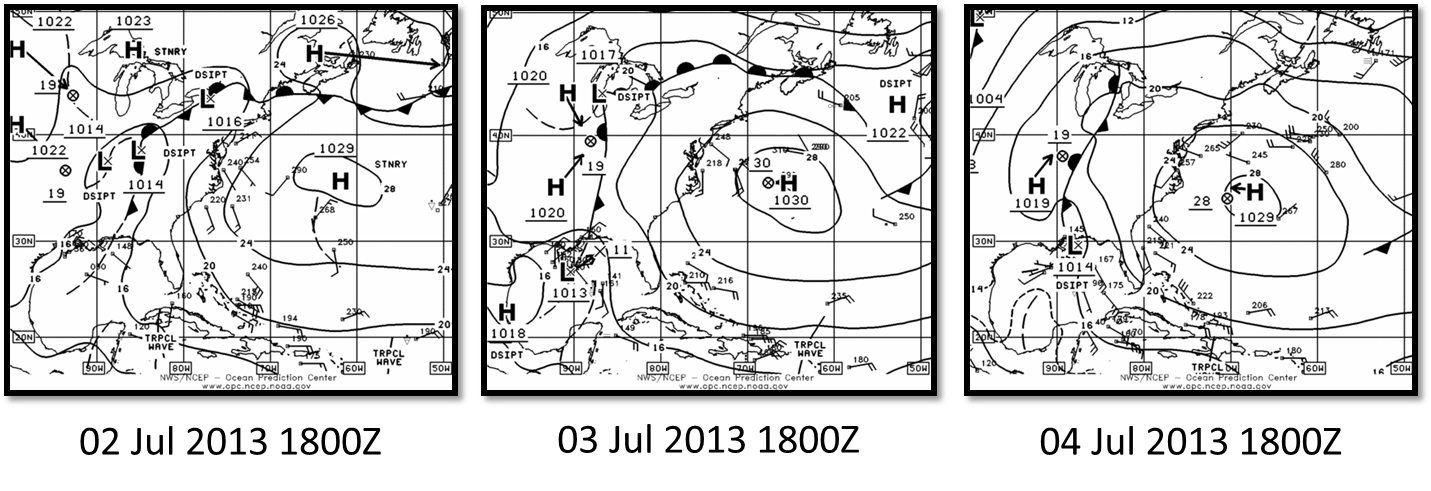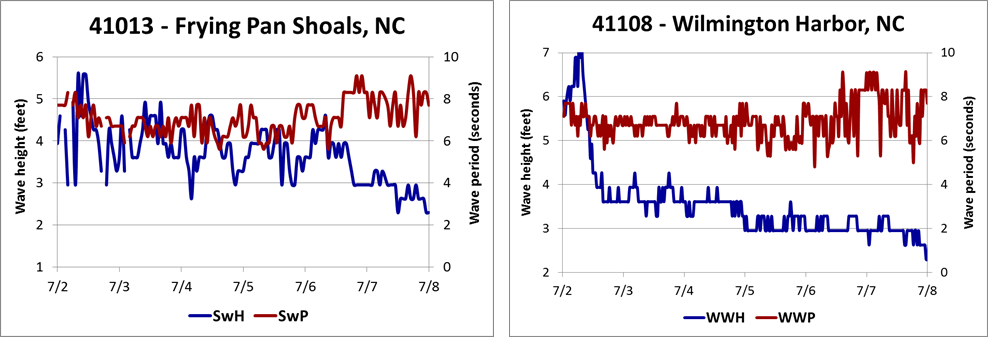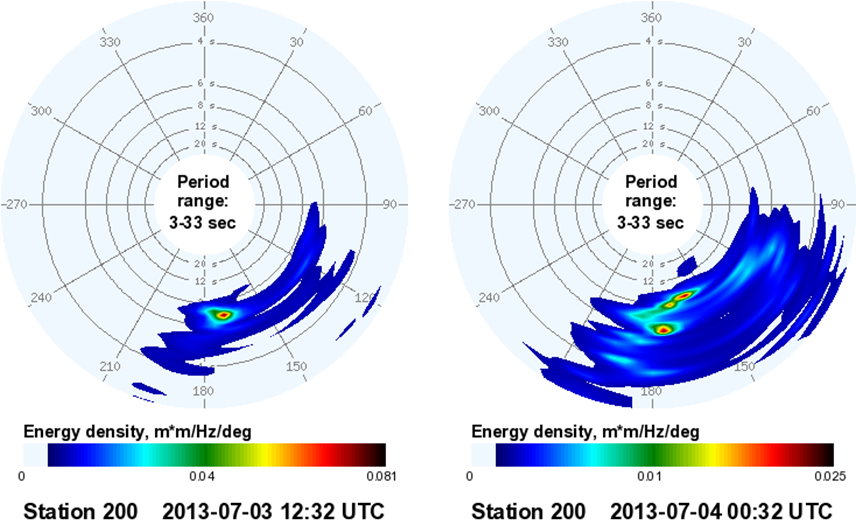Strong Rip Currents Impact Our Local Beaches
July 3-4, 2013
July 3-4, 2013 marked the deadliest rip current event on record in the Wilmington, NC county warning area (CWA). There were six confirmed rip current drownings at our local beaches - four in Brunswick County, NC and two in Horry County, SC. In fact, an extended stretch of moderate to strong rip currents persisted through the first week of July (see below). Lifeguards at the Cape Fear and Grand Strand beaches performed hundreds of rip current rescues. This prolonged period of strong rip activity was atypical in that it was not associated with swells from a tropical cyclone. The following page examines the synoptic weather conditions, wave characteristics, and other factors that contributed to this tragic event.

Rip current reports received by NWS ILM from 2-8 July 2013. The warmer colors represent increased rip current activity, with yellow (red) indicating that moderate (strong) rip activity was reported by our ocean rescue partners. The number of daily rip current rescues performed by lifeguards is also provided. The white boxes represent days with missing reports.

On 2 July 2013, surface high pressure was building in across the western Atlantic as a frontal boundary dissipated over the eastern United States. By 1800Z 2 July, a 1029 mb high pressure center was analyzed near Bermuda. This surface high remained nearly stationary over the western Atlantic for the next few days, placing the Carolinas within persistent south-southeast surface flow. At Ocean Crest Pier in Oak Island, NC, S-SE winds around 15 knots prevailed from 2-4 July. In fact, the wind direction changed very little until 7 July, when the surface high finally neared the Mid-Atlantic coast. The orientation of our coastline is such that S-SE winds have a predominantly onshore component in Brunswick County, NC and northern Horry County, SC. Strong, persistent onshore flow certainly favors enhanced rip current activity at the south-facing Brunswick County beaches, as well as for the North Myrtle Beach, SC area.
Wave Conditions
Unlike many extreme rip current events in this area, there was no long period swell associated with a tropical cyclone or storm system. Instead, the long fetch around the Bermuda high well offshore produced high energy wind waves oriented nearly perpendicular to the Brunswick and northern Horry coastline. Wave data from buoys 41013 and 41108 show that 3-5 ft. waves with periods of 6-8 seconds prevailed on 3-4 July. Spectral wave analysis from buoy 41108 confirms these 6-8 second, 3-5 ft. waves approached the coastline from the S-SE. Unlike waves with a more easterly component, the S-SE wave direction ensured that the incoming wave energy was not dissipated by the Frying Pan Shoals. Therefore, these waves transported excessive energy into the surf zone, creating stronger and more frequent rip currents at the local beaches.

Wave height (blue) and wave period (red) from buoys 41013 and 41108 from 2-8 July. The dominant waves at both stations on 3-4 July were 3-5 ft. with periods of 6-8 seconds, and the mean wave direction was from the S-SE at both buoys.

Polar wave energy density plots from buoy 41108 on 12Z 3 July and 00Z 4 July. Both plots reveal the highest wave energy was approaching from the S-SE with periods of 6-8 seconds. The second plot actually depicts two wave groups – S-SE swell waves at 8 seconds and S wind waves at 6 seconds.
Additional Considerations
Page Author: Brad Reinhart
Page Created: July 6, 2014